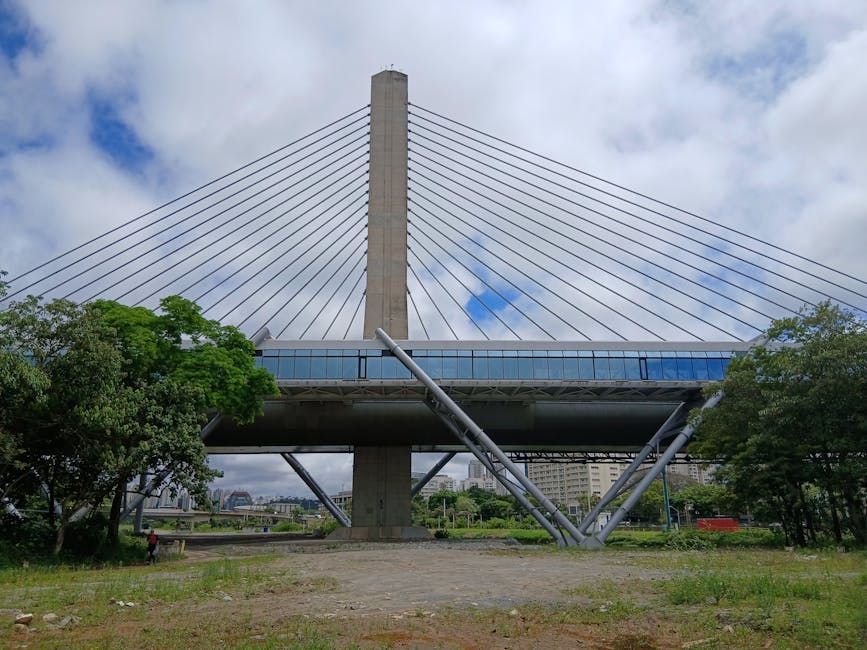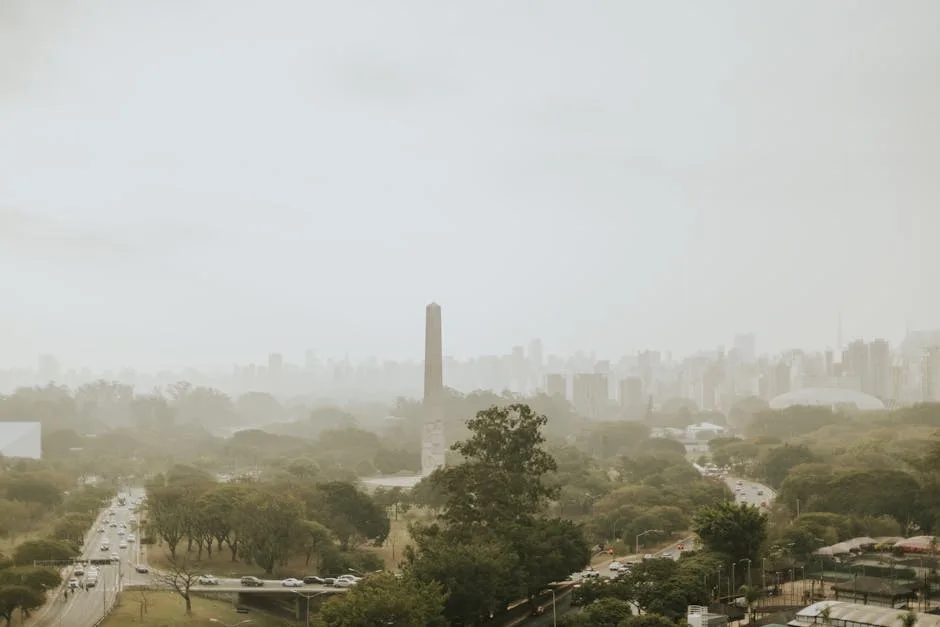- So, You're Dreaming of Brazil? Let's Talk Money.
- The Big Picture: Understanding Brazilian Currency and Costs
- Your Monthly Budget: A Line-by-Line Breakdown
- Housing (Aluguel): Your Biggest Expense
- Food (Alimentação): From Feiras to Fine Dining
- Transportation (Transporte): Getting Around
- Utilities, Internet & Healthcare
- The Regional Showdown: Where Does Your Money Go Furthest?
- The Powerhouse Southeast: São Paulo & Rio de Janeiro
- The Sun-Kissed Northeast: Salvador, Recife & Fortaleza
- The European South: Florianópolis, Curitiba & Porto Alegre
- Sample Monthly Budgets: Seeing it in Practice
- Comfortable Expat in São Paulo (Pinheiros neighborhood)
- Comfortable Expat in Recife (Boa Viagem neighborhood)
- Top Tips for Saving Money in Brazil
So, You’re Dreaming of Brazil? Let’s Talk Money.
The thought of moving to brazil probably conjures up images of samba-filled nights, sun-drenched beaches, and the intoxicating smell of pão de queijo fresh from the oven. It’s a country that pulses with life, color, and a passion that’s hard to resist. But between booking that flight and learning your first few words in Portuguese, there’s a big, practical question looming: What does it actually cost to live in brazil?
You’ve probably heard conflicting reports. Some say it’s incredibly cheap, a paradise where your dollars or euros stretch for miles. Others warn of “custo Brasil”—the notorious ‘Brazil Cost’—where prices for certain goods can be surprisingly high. The truth? It’s both, and it all depends on where you live and how you live.
Forget a one-size-fits-all answer. Brazil is a continent-sized country with vast economic differences from one state to the next. The cost of a beachfront apartment in Rio de Janeiro is worlds away from a similar place in a charming northeastern city. That’s why we’re going to break it down, region by region, so you can get a real, practical sense of what to budget for your Brazilian adventure, whether you’re a digital nomad, a retiree, or just looking for a new life abroad.
The Big Picture: Understanding Brazilian Currency and Costs
First things first: Brazil’s currency is the Brazilian Real (plural: Reais), and its symbol is R$. The exchange rate against major currencies like the USD and EUR is constantly fluctuating. This is super important! A favorable exchange rate can make your life significantly cheaper, while a dip can tighten your budget. Always check the current rate when you’re planning.
As a general rule, Brazil is more affordable than North America and Western Europe, especially when it comes to services, food, and public transport. However, imported goods, electronics, and cars are often significantly more expensive due to high import taxes. The key to living affordably is to live like a local. Embrace the local markets, eat at restaurants serving prato feito (the daily lunch special), and enjoy the countless free activities, like hanging out at the beach or exploring a city park.
Your Monthly Budget: A Line-by-Line Breakdown
Let’s get into the nitty-gritty. Here are the major expense categories you’ll need to consider for your monthly budget.
Housing (Aluguel): Your Biggest Expense
Rent will almost certainly be your largest monthly cost. Prices vary dramatically based on the city, the neighborhood (bairro), and the size and quality of the apartment. In major cities, you’ll find everything from tiny ‘kitnets’ (studios) to sprawling luxury penthouses.
- Major City Center (São Paulo, Rio): A modern one-bedroom apartment in a desirable neighborhood like Pinheiros (São Paulo) or Ipanema (Rio) can run from R$3,500 to R$6,000+ (approx. $700 – $1,200+ USD).
- Mid-Sized City (Florianópolis, Curitiba): Expect to pay R$2,000 to R$3,500 (approx. $400 – $700 USD) for a similar one-bedroom place.
- Affordable City (Recife, João Pessoa): Here, you can find great one-bedroom apartments for R$1,200 to R$2,500 (approx. $240 – $500 USD).
Remember to factor in the condomínio, a monthly building fee that covers security, maintenance, and amenities, which can add R$300 to R$1,000+ to your rent.
Food (Alimentação): From Feiras to Fine Dining
This is where Brazil truly shines! You can eat incredibly well for a very reasonable price. Your food costs will depend on whether you cook at home or eat out frequently.
- Groceries: Shopping at local street markets (feiras) is a fantastic way to get fresh, seasonal produce for cheap. A weekly grocery bill for a single person who cooks most meals could be around R$250 – R$400 (approx. $50 – $80 USD).
- Eating Out: A simple and delicious lunch special, the prato feito or PF, will cost you R$20 – R$35. A meal at a mid-range restaurant for two might be R$150 – R$250. And a fresh juice or açaí bowl from a corner shop? A delightful R$10 – R$15.
Transportation (Transporte): Getting Around
Major Brazilian cities have extensive public transportation systems, though they can be crowded. Ride-sharing apps are also very popular and affordable.
- Public Transit: A single bus or metro ride in cities like São Paulo or Rio costs around R$5. A monthly pass can offer savings if you commute daily.
- Ride-Sharing: Uber and a local competitor, 99, are widely available and much cheaper than in the US. A 15-20 minute ride might cost R$15 – R$30.
- Owning a Car: This is generally not recommended for expats unless you live in a remote area. Cars and gasoline are expensive, and city traffic can be intense.
Utilities, Internet & Healthcare
These are the essential monthly bills you can’t forget.
- Utilities: Electricity, water, and gas for a one or two-person apartment will typically run R$200 – R$400 per month. Air conditioning usage can significantly increase your electricity bill in hotter regions.
- Internet & Mobile: A good high-speed home internet plan costs about R$100 – R$150 per month. Mobile phone plans with plenty of data are also affordable, often around R$50 – R$80.
- Healthcare (Saúde): While Brazil has a public healthcare system (SUS), it can be overburdened. Most expats opt for private health insurance (plano de saúde). A good plan can range from R$400 to R$1,000+ per month, depending on your age and coverage.
The Regional Showdown: Where Does Your Money Go Furthest?
Now for the fun part. Let’s explore how costs differ across Brazil’s diverse regions.
The Powerhouse Southeast: São Paulo & Rio de Janeiro
This is Brazil’s economic and cultural heart. São Paulo is the sprawling financial hub, a concrete jungle with world-class dining and nightlife. Rio is the Cidade Maravilhosa, famous for its stunning natural beauty, beaches, and laid-back vibe. They are also, unsurprisingly, the most expensive places to live.
You’ll find the highest salaries and job opportunities here, but also the highest rents and prices for everyday goods. A comfortable lifestyle in a good neighborhood in either city requires a budget of at least R$8,000 – R$12,000+ ($1,600 – $2,400+ USD) per month for a single person.

The Sun-Kissed Northeast: Salvador, Recife & Fortaleza
Welcome to paradise on a budget! The Northeast is known for its incredible coastline, rich Afro-Brazilian culture, and a much more relaxed pace of life. Cities like Salvador (the historic capital), Recife, and Fortaleza offer a fantastic quality of life for a fraction of the cost of the Southeast.
Housing, food, and entertainment are all significantly cheaper here. You can live a very comfortable life on R$4,000 – R$7,000 ($800 – $1,400 USD) per month. It’s a hugely popular region for digital nomads and retirees looking to make their money stretch while enjoying a warm climate year-round.
The European South: Florianópolis, Curitiba & Porto Alegre
The South of Brazil feels distinct, with its strong European heritage, organized cities, and cooler climate. Curitiba is renowned for its urban planning and green spaces, while Porto Alegre is a vibrant cultural hub. Florianópolis, or ‘Floripa,’ is a beautiful island known for its beaches, safety, and tech scene.
The cost of living here is a middle ground between the Northeast and the Southeast. It’s more expensive than Salvador but more affordable than São Paulo. Floripa, in particular, has seen prices rise due to its popularity, but it still offers great value. A comfortable monthly budget here would be in the R$6,000 – R$9,000 ($1,200 – $1,800 USD) range.

Sample Monthly Budgets: Seeing it in Practice
To make this more concrete, here are two sample monthly budgets for a single expat.
Comfortable Expat in São Paulo (Pinheiros neighborhood)
- Rent + Condomínio: R$4,500
- Groceries: R$1,200
- Eating Out/Entertainment: R$1,500
- Transportation (Uber/Metro): R$400
- Utilities & Internet: R$400
- Private Health Insurance: R$600
- Total: R$8,600 (approx. $1,720 USD)
Comfortable Expat in Recife (Boa Viagem neighborhood)
- Rent + Condomínio: R$2,200
- Groceries: R$900
- Eating Out/Entertainment: R$1,000
- Transportation (Uber/Bus): R$300
- Utilities & Internet: R$350
- Private Health Insurance: R$500
- Total: R$5,250 (approx. $1,050 USD)
Top Tips for Saving Money in Brazil
Want to make your Reais go even further? Live like a local!
- Embrace the Feira: Do your weekly fruit and vegetable shopping at the neighborhood street market. It’s fresher, cheaper, and a wonderful cultural experience.
- Lunch is the Main Meal: Take advantage of the prato feito (PF) or self-service ‘kilo’ restaurants for a huge, affordable, and delicious lunch.
- Learn Basic Portuguese: Not only will it enrich your experience, but it will also help you navigate daily life and avoid being overcharged in touristy areas.
- Use Public Transport: It’s a cost-effective way to get around major cities.
- Explore Free Activities: Brazil is full of them! Enjoy the beaches, hike in national parks, wander through historic city centers, and soak in the vibrant street life.
Brazil is a country of incredible diversity, and that applies to its cost of living as well. Whether you’re drawn to the high-energy pulse of São Paulo or the tranquil beaches of the Northeast, there’s a place that can fit your budget. By doing your research and embracing the local lifestyle, you can build an amazing life in this beautiful, complicated, and utterly captivating country.




